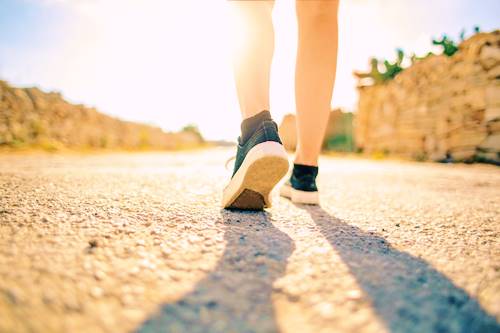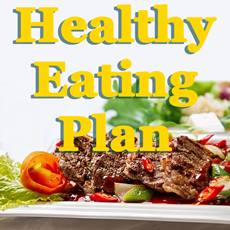Can sunlight protect your heart?

Heart protecting effect of outdoor sunshine exposue
Fact Checked
×All the content published in our website is fact checked to validate its accuracy.
Visit our guidelines web page to learn more about our strict processes regarding how we review our content's sources: reliable and reputable journals, media websites, universities, colleges, organizations, and professionals.
Our articles are based on scientific evidence, and the references are included in its footnotes, which are clickable links to sound scientific papers.
First published: Mar 02, 2024
Summary: Protective effects of outdoor light on heart disease
A paper published on February 13, 2024 (1) looked into how exposure to outdoor light, and the duration of this exposure impacted on heart failure.
They found evidence suggesting that moderate exposure to sunlight has a protective effect on heart disease. They also propose some explanations on how can sunshine be beneficial for the heart.

Sunshine and Heart Failure
The authors analyzed data from over 500,000 UK Biobank subjects aged 40 to 70, and who were free of heart disease when the study started. They were followed up for an average of 12.6 years during which almost 14,000 developed heart disease. The participants recorded their outdoor light exposure time over this period.
The analysis of the data found that those who received 1 to 2.5 hours of outdoors light per day had the lowest risk of heart failure compared to those who received less than 1 hour or more than 2.5 hours.
The study also reported that "moderate outdoor light exposure in elderly individuals may attenuate the adverse effect of aging on the cardiovascular system to some extent."
This type of association is known as a J-shaped one, because the variable measured initially drops, but then rises again. In this case there is a noticeable increase of heart disease risk at low exposures, and a mild increase at higher exposure times.
Sunlight has an impact on health, too much of it can cause skin or eye conditions, such as sunburn is linked to skin cancer. However, it appears to have a positive outcome for other conditions such as dementia, diabetes, or cardiovascular disease.
These findings are in line with those of another study that took place in 2014 and followed 17,773 American subjects aged 45 or more (2); it reported that "good" cholesterol (high-density lipoprotein) levels were lower, and blood pressure levels higher in those who had the lowest sunlight exposure compared to those with the highest exposure time.
Protective Mechanisms
There are several mechanisms by which outdoor light is linked to heart health. Let's look into them:
Vitamin D
Sunlight absorbed through the skin is the main source of Vitamin D, and some previous studies have suggested that it plays a protective role and reduces the risk of heart failure. Some clinical trials have produced inconsisten results indicating that other factors also play a role in the cardiovascular-outdoor light association.
Studies in mice show that deleting vitamin D receptors in cardiomyocytes (special cells that help the heart contract) provoked heart disease. Diabetic rats treated with vitamin D showed improved heart function. Studies in humans have shown a reduction in heart disease with higher levels of vitamin D.
The sunlight itself
A study showed that exposure to ultraviolet radiation lowered blood pressure by causing the skin to release nitrogen oxide.
Exposure to daylight is also linked to sleeping better, reducing fatigue, insomnia and tiredness. It seems that outdoor light impacts on the body's circadian system affecting the mood and cardiovascular health.
Healthy lifestyle
It is known that exercise reduces heart disease risk, could it be that those who spend more time outdoors are more active?
This paper reported the following characteristics of its participants:
- The participants who suffered from heart failure "were more likely to be: older, men, less educated, current smokers, higher PM 2.5 exposure, use less sun⁄ultraviolet radiation protection, have lower levels of vitamin D and estimated glomerular filtration rate, have a higher intake of alcohol, and have a higher prevalence of diabetes and nonideal physical activity with a higher BMI... [and] spent more time exposed to outdoor light."
- Those who spent least time exposed to outdoor light had "higher education levels, lower levels of vitamin D, SBP [systolic blood pressure], triglycerides, and total cholesterol, and nonideal physical activity." In this study nonideal physical activity is less than 75 minutes of vigorous activity per week or 150 minutes of moderate activity per week or an equivalent combination.
So both groups with the worse outcomes are those of the two tips of the J-curve, those with least outdoor light exposure and those with most exposure, and both share the same common feature of "nonindeal physical activity;" the authors conclude that there is a link "between physical activity and outdoor light exposure time; participants with nonideal physical activity and shorter outdoor light exposure time are at higher risk of incident HF [heart failure], indicating that people who are not physically active should alternatively spend more time in outdoor light to reduce HF risk."
Summer and Winter exposure
Another study by Cannistraci et al, (2018) (3) reported that myocardial infarctions ("heart attacks") peaked during the winter months and dropped notably in the summer months, indicating that increasing outdoor light duration in summer may lead to an reduced risk of heart disease.
This study found a moderate correlation between the duration of exposure in summer and winter, this suggests that those who spend more time outdoors in the summer also do the same in winter.
The study notes that seasonal diseases, such as stroke and respiratory infections, occurred more often in the winter.
Environment and Outdoors
Temperature, pollution and noise can have a negative impact on heart health, neutralizing the positive sunlight effect. High levels of air contamination and noise increase blood pressure. Temperature is linked to alterations in some body chemicals (B‐type natriuretic peptide and C‐reactive protein) that are predictors of heart failure.
Outdoor temperature is also associated with a higher level of blood lipids and lower lower levels of Unsaturated fatty acids both of which are risk factors for heart health.
An urban setting also may have a negative effect compared to a natural one: immersing in nature is good for your health.
Risk Factors that reduce the positive effect of sunlight
Since the association is J-shaped, an excessive exposure to outdoor light could increase the risk of heart failure. Ultraviolet radiation may increase the load on the heart. Excessive exposure could elevate body temperature causing the heart rate to increase.
They also found that subjects who slept fewer hours, were smokers, over 60 years old, and out of shape or had a higher body weight "were at higher risk of Heart Failure if they spent less or more time in outdoor light."
- Those who spend less time outdoors and don't engage in adequate physical activity are at a higher risk of heart failure. This suggests that "people who are not physically active should alternatively spend more time in outdoor light to reduce HF risk."
- Sleep duration has an impact on heart failure, the shorter it is the more negative the effect. Outdoor light exposure, whether short or long, does not improve the risk in those who don't sleep enough.
- Being overweight increased the risk of heart faiulure regardless of the duration of outdoor light exposure.
The authors caution that:
Therefore, outdoor light exposure may not offset the risk induced by sleep deprivation or higher BMI [Body Mass Index].
Closing comments
Keep fit, slim, shed some pounds, eat a healthy diet, and try to exercise at least 150 minutes per week with moderate activity and do it outdoors (use sunscreen!). It will make you feel better, fitter and help your heart.
Back to News...
> > News - Read more health and wellness news.
References and Further Reading
(1) Ziteng Zhang, Bowei Yu, Ying Sun, Kun Zhang, Xiao Tan, Yingli Lu, Ningjian Wang and Fangzhen Xia (2024). Self‐Reported Outdoor Light Exposure Time and Incident Heart Failure. 13 Feb 2024 https://doi.org/10.1161/JAHA.123.031830Journal of the American Heart Association. 2024;13:e031830.
(2) Kent ST, Cushman M, Howard G, Judd SE, Crosson WL, Al-Hamdan MZ, McClure LA. (2014). Sunlight exposure and cardiovascular risk factors in the REGARDS study: a cross-sectional split-sample analysis. BMC Neurol. 2014 Jun 19;14:133. doi: 10.1186/1471-2377-14-133. PMID: 24946776.
(3) Cannistraci CV, Nieminen T, Nishi M, Khachigian LM, Viikilä J, Laine M, Cianflone D, Maseri A, Yeo KK, Bhindi R, et al (2018). "Summer shift": a potential effect of sunshine on the time onset of ST‐elevation acute myocardial infarction. J Am Heart Assoc. 2018; 7:e006878. doi: 10.1161/JAHA.117.006878.
About this Article
Outdoor sunshine exposure has an impact on heart disease, A. Whittall
©2019 Fit-and-Well.com, 02 Mar. 2024. Update scheduled for 02 Mar. 2027. https://www.fit-and-well.com/health/sunlight-and-heart-health-Mar-02-2024.html
Tags: vitamins, heart disease, outdoors, sunburn, health news


